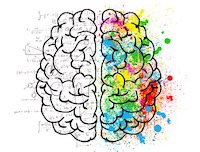In my Retrospective Magic course, I’m mostly focused on team based retrospectives, and I was asked this week what needs to change when we’re doing a larger one?
If we’re doing a retrospective across two teams and the total number of participants is relatively small then not much changes, aside from the fact that we might want to allocate more time.
As we get more and more participants in a retrospective, however, the dynamic starts to change. The more people we have, the less likely it is for individual people to speak up. If we have four people in the meeting, it’s likely that everyone will participate. If we have a hundred in the meeting, we might only have a handful of people speaking up, while everyone else remains quiet.
Does this mean that we can’t do a large retrospective? Not at all, we just need to adjust our approach a bit.
Recognizing that people are more likely to participate if they’re in a smaller group, we need to subdivide the larger group into much smaller ones, allow them to discuss among themselves, and then bring them back to the larger group to share what they learned.
One other difference, is that with a larger group, we may decide to keep more actions. With a single team retrospective, I always stress that fewer is better, and one is enough. In a larger setting, fewer is still better, but one may be too few. If the larger group is made up of five smaller groups then we may want each of those smaller groups to take some action away. There is no perfect answer here, just be aware that this is a case where we may want more actions than we would, from a smaller group.
Let’s look at some examples. Both of these examples were done in person, but that shouldn’t imply that you can’t do them remotely. You absolutely can.
Example 1 : Using Six Thinking Hats
I had a group of about a hundred people, and only three hours so we had to do some preparation ahead of time. In the week leading up to the retrospective, a survey had been sent out to collect high level themes where people thought we could improve. From these themes, we set up a large room with round tables, where each table represented one of those themes. Each table then used the Six Thinking Hats approach to discuss that specific theme, look for ideas, and subsequently select actions that could be taken around that.
When each group had finished discussing their theme at their table, one representative from each table got up and explained what they’d come up with, to the larger group. There was an opportunity for other tables to ask questions and get clarification on what was meant.
Each table had possible actions and as they’d explained what they’d come up with, those actions got added to the larger pool of possible actions.
Then as an entire room, they looked at all the actions from all the tables and voted on the ones they felt would make the most difference.
Example 2 : Using Open Space
I had an entire IT department of more than sixty people, including management, and a full day allocated for this activity. The individual teams had been doing retrospectives on a regular basis, but this activity was different in that we were looking at the entire system, not just one team, and were retrospecting over a one year period.
I had brainstormed with some of the leads ahead of time and we’d put notes up on the walls to represent a timeline of things that had happened during that year. We were careful not make any of these judgmental; these are merely things that happened. The purpose was to be a reminder of what had happened across the year.
After welcoming everyone and briefly walking through the timeline, we spent about half an hour as an entire group, brainstorming topics. Mostly this was done in silence, which often helps move it along faster.
Once we had a smaller number of topic areas, we used those to populate the marketplace for an Open Space, and ran multiple one hour sessions in an open space format.
It’s worth calling out that due to the way Open Space works, it’s entirely possible that some themes will be completely ignored and that’s OK. The ones that people are passionate about will have been discussed.
When all rounds of open space discussions were complete, someone from each discussion presented what they’d learned and what actions they came up with, just as in the example above.
Then as an entire room, they voted on the actions that were most important.
Conclusion
In both examples, we subdivided the larger group into much smaller groups that could then have candid discussions. Then we brought those findings back to the larger group and selected actions. This takes longer, but encourages participation from everyone and gets better results.
One quick note on doing this remotely. In order to subdivide the group effectively, you’ll need breakout rooms and the ability to move people into breakout rooms quickly. I strongly advise you to have one person allocated to just managing the technology. The facilitator will be busy enough keeping an eye on the people, and if they have to also manage all the breakout rooms, then that’s overwhelming. Get someone to help you.

